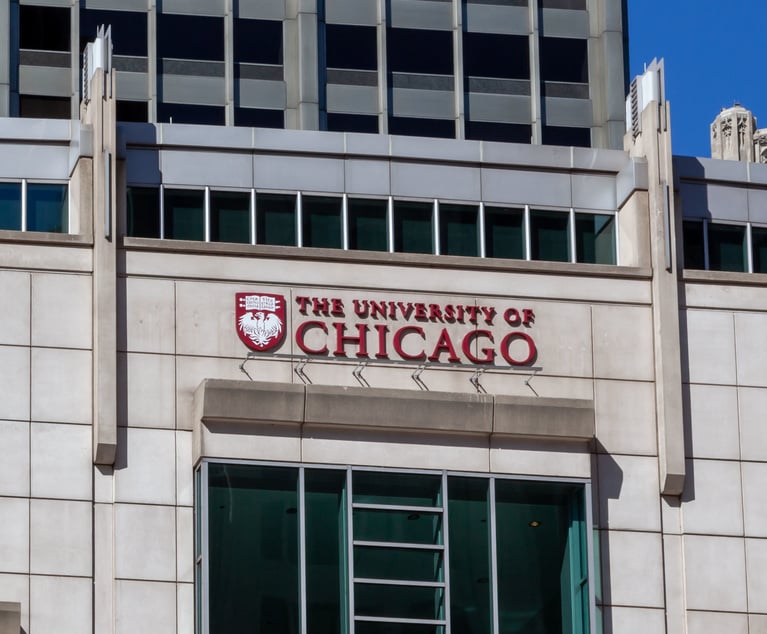2018 Law Grads Enjoyed Strongest Job Market in a Decade: NALP
Fully 89% of the class of 2018 found jobs within 10 months, and 71% were positions that required a law degree. Large law firms also upped their hiring last year.
July 31, 2019 at 12:01 AM
4 minute read
 Photo: Shutterstock.
Photo: Shutterstock.
The number of new law graduates heading into private practice is on the rise for the first time in half a decade—albeit modestly.
That's one key takeaway from the latest entry-level legal employment report from the National Association for Law Placement, which concluded that the jobs outcomes for the class of 2018 were the strongest since the 2008 recession and among the most robust from the past 20 years. That healthy employment rate—89%—was fueled by a combination of fewer law graduates competing for jobs and an uptick in associate hiring among the largest law firms.
“The employment outcomes findings for members of the class of 2018 are strong and, along with the findings for members of the class of 2017, clearly mark the beginning of a new post-recession cohort,” said NALP Executive Director Jim Leipold in the report, which was released Wednesday. “The employment outcomes for this class more closely resemble employment outcomes measured in the years before the recession than they do the classes that graduated between 2009 and 2013 in the immediate aftermath of the recession.”
Nearly 55% of 2018 law graduates secured private practice jobs within 10 months of leaving school, NALP found, coming within striking distance of the most recent high of 56% logged in 2009. Large firm hiring played a significant role in that increase. Firms of 500 or more lawyers brought on an additional 160 associates over the previous year and collectively hired 29% of the 2018 graduating class—up one percentage point from 2017. By comparison, just 25% of the classes of 2008 and 2009 nabbed jobs at those firms during the Big Law's pre-recession heyday. Even so, the total number of new associates hired in 2018 by firms of 500 or more lawyers fell more than 400 short of that figure a decade ago—a result of the fact that law schools collectively pumped out about 27% fewer graduates in 2018 than in 2013.
Interestingly, NALP found that while the largest firms have upped their associate hiring, firms of 250 to 500 lawyers have much farther to go in order return to their pre-recession associate staffing levels. Those firms hired half as many new associates in 2018 as they did in 2007—just 966—offering proof that the recovery of the entry-level legal job market has been uneven.
Increased large firm hiring wasn't enough to budge the median entry level salary reported by 2018 law grads. It held steady at $70,000 for the second straight year. But it did help bump up the average reported salary 3% to $98,150. (NALP collected salary data from 70% of recent graduates in full-time jobs.) Nearly 14% of those graduates reported earning BigLaw's prevailing $190,000 starting salary.
In other good news, the percentage of law graduates in full-time, long-term jobs that require bar passage continued to creep up. Fully 71% of 2018 law graduates landed those jobs with 10 months—an even higher percentage than the classes that graduated before the 2008 recession. The percentage of graduates in jobs for which a law degree is not required but offers an advantage has continued to decline in concert with the rise in J.D.-required jobs. Fewer than 13% of the class of 2018 were in those jobs, down from nearly 15% in 2016.
Most other jobs sectors remained stable in 2018, including clerkships, government and public interest positions. They accounted for 11%, 12% and 7% of all jobs, respectively.
Despite 2018's strong results, there is reason for caution in the coming years, Leipold warned. Importantly, the size of 2019 and 2020's graduating classes are roughly in line with 2018, meaning that employment rates will no longer be propped by fewer graduates on the job market. Moreover, continued declines in bar pass rates across the country could depress the overall employment rate since, graduates can't work legal jobs unless they're licensed, Leipold noted. And hiring trends among large law firms play a big role, as does the national economy, which some experts predict is poised for a slowdown.
“We also know that the run-up in large law firm hiring will not go on forever,” Leipold said. “NALP recruiting data from the last several cycles show that large law firms have recently been making slightly fewer offers for summer associate spots and have brought in slightly smaller summer classes.”
This content has been archived. It is available through our partners, LexisNexis® and Bloomberg Law.
To view this content, please continue to their sites.
Not a Lexis Subscriber?
Subscribe Now
Not a Bloomberg Law Subscriber?
Subscribe Now
NOT FOR REPRINT
© 2025 ALM Global, LLC, All Rights Reserved. Request academic re-use from www.copyright.com. All other uses, submit a request to [email protected]. For more information visit Asset & Logo Licensing.
You Might Like
View All
University of Chicago Accused of Evicting Student for Attending Gaza-Israel Protest
3 minute read
Sanctioned Penn Law Professor Amy Wax Sues University, Alleging Discrimination
5 minute read

The Met Hires GC of Elite University as Next Legal Chief
Trending Stories
Who Got The Work
J. Brugh Lower of Gibbons has entered an appearance for industrial equipment supplier Devco Corporation in a pending trademark infringement lawsuit. The suit, accusing the defendant of selling knock-off Graco products, was filed Dec. 18 in New Jersey District Court by Rivkin Radler on behalf of Graco Inc. and Graco Minnesota. The case, assigned to U.S. District Judge Zahid N. Quraishi, is 3:24-cv-11294, Graco Inc. et al v. Devco Corporation.
Who Got The Work
Rebecca Maller-Stein and Kent A. Yalowitz of Arnold & Porter Kaye Scholer have entered their appearances for Hanaco Venture Capital and its executives, Lior Prosor and David Frankel, in a pending securities lawsuit. The action, filed on Dec. 24 in New York Southern District Court by Zell, Aron & Co. on behalf of Goldeneye Advisors, accuses the defendants of negligently and fraudulently managing the plaintiff's $1 million investment. The case, assigned to U.S. District Judge Vernon S. Broderick, is 1:24-cv-09918, Goldeneye Advisors, LLC v. Hanaco Venture Capital, Ltd. et al.
Who Got The Work
Attorneys from A&O Shearman has stepped in as defense counsel for Toronto-Dominion Bank and other defendants in a pending securities class action. The suit, filed Dec. 11 in New York Southern District Court by Bleichmar Fonti & Auld, accuses the defendants of concealing the bank's 'pervasive' deficiencies in regards to its compliance with the Bank Secrecy Act and the quality of its anti-money laundering controls. The case, assigned to U.S. District Judge Arun Subramanian, is 1:24-cv-09445, Gonzalez v. The Toronto-Dominion Bank et al.
Who Got The Work
Crown Castle International, a Pennsylvania company providing shared communications infrastructure, has turned to Luke D. Wolf of Gordon Rees Scully Mansukhani to fend off a pending breach-of-contract lawsuit. The court action, filed Nov. 25 in Michigan Eastern District Court by Hooper Hathaway PC on behalf of The Town Residences LLC, accuses Crown Castle of failing to transfer approximately $30,000 in utility payments from T-Mobile in breach of a roof-top lease and assignment agreement. The case, assigned to U.S. District Judge Susan K. Declercq, is 2:24-cv-13131, The Town Residences LLC v. T-Mobile US, Inc. et al.
Who Got The Work
Wilfred P. Coronato and Daniel M. Schwartz of McCarter & English have stepped in as defense counsel to Electrolux Home Products Inc. in a pending product liability lawsuit. The court action, filed Nov. 26 in New York Eastern District Court by Poulos Lopiccolo PC and Nagel Rice LLP on behalf of David Stern, alleges that the defendant's refrigerators’ drawers and shelving repeatedly break and fall apart within months after purchase. The case, assigned to U.S. District Judge Joan M. Azrack, is 2:24-cv-08204, Stern v. Electrolux Home Products, Inc.
Featured Firms
Law Offices of Gary Martin Hays & Associates, P.C.
(470) 294-1674
Law Offices of Mark E. Salomone
(857) 444-6468
Smith & Hassler
(713) 739-1250








